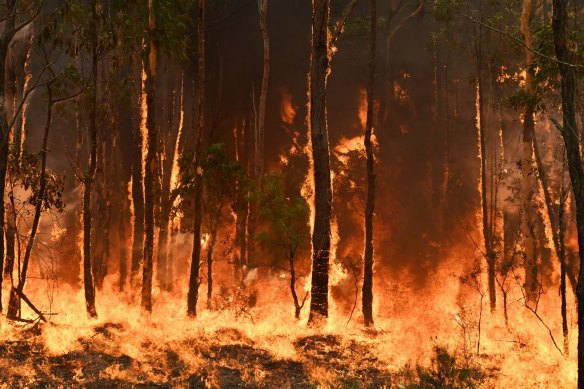Guarding Your Home: The Critical Role of a BAL Report in Bushfire Readiness
Exactly How BAL Record Impacts Bush Fire Defense Steps
In the world of bush fire protection, the Structure Assault Level (BAL) report stands as an essential tool that significantly affects the safety and durability of properties in fire-prone locations - BAL Report. The effect of a BAL analysis expands far past mere documents; it acts as the cornerstone for identifying the proper construction standards and fire protection procedures necessary to reduce the dangers postured by bushfires. As neighborhoods grapple with progressively serious fire seasons, comprehending exactly how the BAL record forms these safety procedures becomes vital for property owners, policymakers, and building contractors alike
Comprehending the Bushfire Attack Degree

Importance of BAL Record Analysis
In Addition, the BAL report assessment serves as a fundamental action in abiding by lawful obligations and demands connected to bushfire defense. Regional councils and authorities usually mandate the submission of a BAL record as component of the planning and building authorization process to make sure that residential properties are properly protected against bushfire dangers. Stopping working to carry out a complete BAL record analysis can cause poor security measures, leaving buildings susceptible to ruining bushfire events.
Building And Construction Specifications Based Upon BAL
A thorough understanding of the Bushfire Strike Degree view it (BAL) makes it possible for home owners to execute building requirements customized to their details risk account. Construction requirements based on BAL are essential in minimizing the effect of bushfires on residential or commercial properties. The BAL rating categorizes the potential threat a home faces throughout a bushfire on a range from BAL-Low important link to BAL-FZ (Flame Zone)
Applying Fire Defense Procedures
With the foundation of building and construction standards based on Bushfire Assault Degree (BAL) in area, the emphasis currently changes towards the practical application of fire protection actions to fortify residential properties against bushfire hazards. Passive measures consist of using fireproof building products, installing coal guards on vents, sealing gaps in wall surfaces and roofing systems, and keeping a clear space around the home complimentary from combustible plants. By integrating both passive and active approaches, residential or commercial properties can substantially minimize their vulnerability to bushfire incidents and raise the safety and security of residents.
Shielding Homes Versus Bushfires
Effectively protecting homes against the destructive influences of bushfires calls for a aggressive and thorough strategy to fire security measures. Additionally, sealing voids and vents to avoid cinder invasion, as well as integrating fire-resistant doors and windows, can aid strengthen the home's protection versus bushfires. By embracing an aggressive stance and integrating these protective actions, homeowners can dramatically raise their possibilities of securing their homes against bushfires.
Conclusion
In verdict, the Bushfire Attack Level (BAL) report plays an important role in determining the required defense actions against bushfires. Executing fire defense steps based on the BAL report is essential in securing residential properties from prospective bushfire hazards.
In evaluating bushfire danger to properties, understanding the Bushfire Strike Level (BAL) is an important part for implementing effective protection procedures. On the whole, a clear understanding of the Bushfire Attack Level is important for applying sufficient security procedures and minimizing the impact of bushfires on properties.
